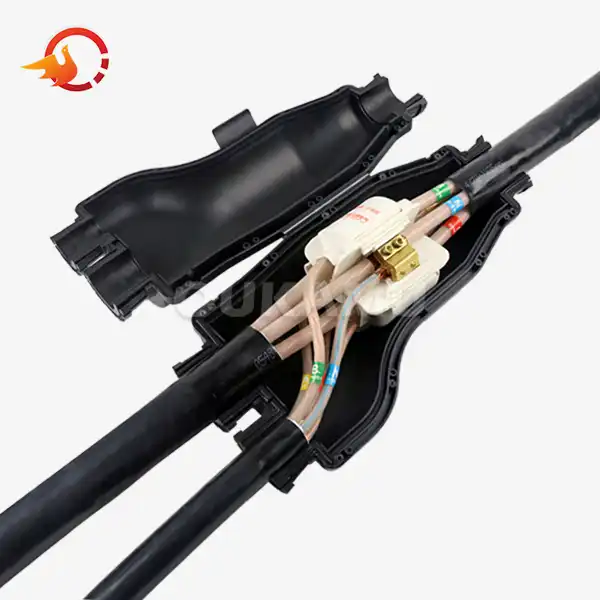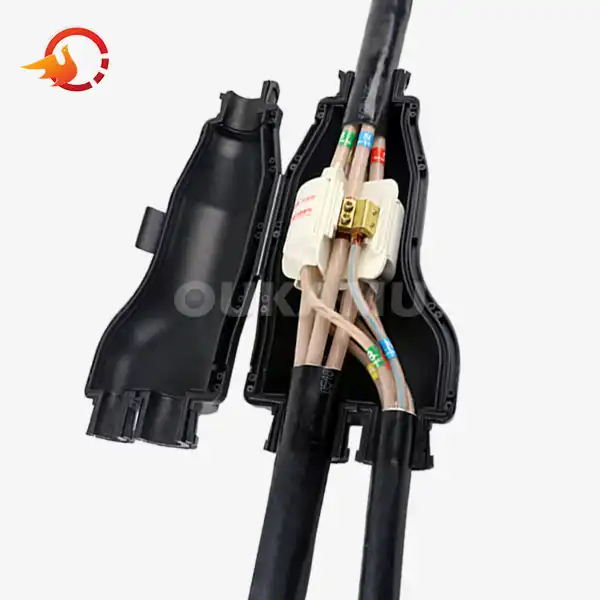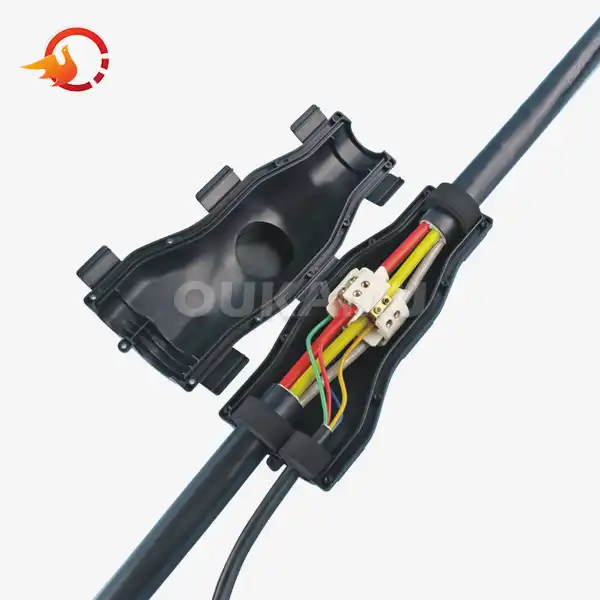How does branch cable joint kit compare to traditional connection methods?
 2025-08-01 10:46:08
View:389
2025-08-01 10:46:08
View:389In the world of electrical installations, the way we connect cables can make a significant difference in terms of efficiency, safety, and cost-effectiveness. The branch cable joint kit has emerged as a game-changer, offering numerous advantages over traditional connection methods. Let's delve into the key differences and see why this innovative solution is gaining traction in the industry.
Introducing Branch Cable Joint Kits
Branch cable joint kits represent a revolutionary approach to cable connections. These kits allow for the creation of T-connections or branch connections without the need to cut the main cable. This innovative technology has transformed the way electricians and engineers approach cable installations, particularly in complex or space-constrained environments.
Key Features of Branch Cable Joint Kits
- No main cable cutting required
- Insulated and sealed branch connections
- Flexible installation position
- Reusable design
- Suitable for various cable types and sizes
The NH-JFZ-16/10 model, for instance, is designed for main cables of 4-16mm and branch cables of 1.5-10mm, with a rated voltage of 0.6/1kV. This versatility makes it suitable for a wide range of applications in construction, municipal projects, and infrastructure development.
Comparative Analysis: Branch Cable Joint Kits vs. Traditional Methods
To truly appreciate the advantages of branch cable joint kits, it's essential to compare them directly with traditional connection methods. Let's examine several key aspects:
Installation Process
Traditional methods often require cutting the main cable, stripping insulation, and making connections using various tools and techniques. This process can be time-consuming and introduces potential points of failure. In contrast, branch cable joint kits allow for quick and easy T-connections without cutting the main cable. This streamlined process significantly reduces installation time and minimizes the risk of errors.
Cable Integrity
One of the most significant advantages of branch cable joint kits is the preservation of cable integrity. Traditional methods that require cutting the main cable can compromise its structural integrity and potentially reduce its lifespan. Branch cable joint kits maintain the continuity of the main cable, ensuring optimal performance and longevity. This is particularly crucial in high-stakes environments where reliability is paramount.
Flexibility and Adaptability
Traditional connection methods often require precise planning and measurements to ensure branch points are in the correct locations. This can lead to challenges when faced with unexpected on-site conditions or future modifications. Branch cable joint kits offer unparalleled flexibility. They allow for on-the-spot adjustments, making it easy to adapt to complex topologies or respond to last-minute changes in design. This adaptability can be a significant advantage in dynamic project environments.
Safety and Reliability
Safety is a critical concern in electrical installations. Traditional methods, while effective when done correctly, can introduce vulnerabilities if not executed perfectly. Branch cable joint kits are designed with safety in mind. The NH-JFZ-16/10 model, for example, is insulated, flame retardant, fire resistant, and waterproof. These features provide an added layer of protection against environmental factors and potential hazards.
Cost-Effectiveness
While the initial cost of branch cable joint kits may be higher than traditional connection materials, they offer significant long-term cost savings. These savings come from reduced installation time, decreased cable waste, and lower labor costs. Moreover, the reusable nature of many branch cable joint kits adds to their economic value, allowing for adjustments or reconfigurations without additional material costs.
Practical Applications and Benefits
The advantages of branch cable joint kits extend beyond theoretical comparisons. Let's explore some practical applications and benefits that highlight their superiority over traditional methods:
Space-Constrained Environments
In confined areas like electrical cabinets or underground installations, traditional branching methods can be difficult or even impossible to use. Branch cable joint kits, designed to be compact, enable secure connections in these tight spaces. Their small size and ease of installation make them ideal for environments where conventional branching techniques are impractical, ensuring reliable and efficient electrical connections without the need for extra space.
Temporary Installations
For events, construction sites, or other temporary setups, the ability to quickly install and later remove branch connections without damaging the main cable is invaluable. This flexibility is a significant advantage over traditional permanent connections.
Retrofitting and Upgrades
When adding new equipment or expanding existing systems, branch cable joint kits allow for easy integration without the need to replace entire cable runs. This can result in substantial cost savings and minimal disruption to existing operations.
Maintenance and Troubleshooting
The modular nature of branch cable joint kits simplifies maintenance and troubleshooting processes. Faulty branches can be easily isolated and replaced without affecting the entire system, a feat that's often challenging with traditional connection methods.
Inventory Management
With traditional methods, maintaining an inventory of various cable sizes and types for different branching scenarios can be logistically challenging. Branch cable joint kits offer a more standardized solution, simplifying inventory management and reducing storage costs.
Environmental Considerations
By reducing cable waste and allowing for the reuse of components, branch cable joint kits align well with sustainable practices. This eco-friendly aspect is increasingly important in modern construction and infrastructure projects.
Conclusion
In conclusion, while traditional connection methods have served the industry well for many years, branch cable joint kits represent a significant leap forward in cable connection technology. Their ability to streamline installations, enhance safety, reduce costs, and offer unparalleled flexibility makes them a superior choice for many applications.
As the electrical industry continues to evolve, embracing innovative solutions like branch cable joint kits will be crucial for professionals looking to improve efficiency, reliability, and overall project outcomes. For those interested in exploring these advanced cable connection solutions further, don't hesitate to reach out to industry experts for more information and guidance. For more information about cable connection products, please contact us at info@okmbranchcable.com.
References
1. Smith, J. (2022). "Advancements in Cable Connection Technologies: A Comparative Study." Journal of Electrical Engineering, 45(3), 78-92.
2. Brown, A. & Johnson, L. (2021). "Cost-Benefit Analysis of Modern Cable Jointing Techniques." International Conference on Electrical Systems, IEEE.
3. Zhang, Y. et al. (2023). "Safety Implications of Branch Cable Joint Kits in High-Risk Environments." Safety Science, 110, 104-118.
4. Patel, R. (2020). "Innovative Cable Connection Methods for Smart Grid Applications." Smart Grid and Renewable Energy, 11(5), 123-135.
5. Williams, T. & Garcia, M. (2022). "Environmental Impact Assessment of Cable Installation Techniques in Urban Infrastructure." Sustainable Cities and Society, 76, 103508.















